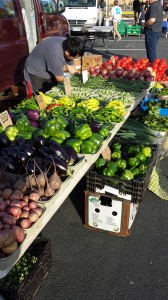According to the Minnesota Department of Health, the use of local produce at MN food facilities has risen considerably
in the last decade. While buying locally requires extra work and extra attention, the results are usually well worth the time. Local produce is fresher. Buying local food supports the community and the environment. There is growing consumer demand for local food. Using local produce can substantially increase a food establishment’s popularity.
Listed below are six things for food service and restaurant managers to consider when using local produce. This information is helpful for food safety certification MN.
Take Small Steps –
It is easy to add a few items to existing menus. For example, it’s possible to extend a salad bar to include local tomatoes and specialty greens in season. Local fruits and vegetables can replace the standard fare from a national distributor. Local varieties of root vegetables can substitute for more generic produce. Start small, and adjustments are easier to make.
Buy in Season –
The great advantage of local produce is that it does not travel far. It is harvested at its peak of flavor and ripeness. It is consumed closer to the time of its harvest. Buying in season saves money and generally guarantees freshness. By keeping track of what is available throughout the growing season, managers optimize their use of local foods.
Work With Distributors –
Many distributors have expanded to include the local produce markets, at least in part. It is suggested that you ensure that this is the case with existing distributors. As demand for local produce grows, so do services to provide that food effectively. Local distributors will have email lists, websites, phone hotlines and other means of letting their customers know what is available week to week.
Visit the Farm –
Buying local produce is an investment in the local community. Farms frequently have visiting days during the harvest season. Checking the care, cleanliness, and competence of farm production and personnel will build confidence and a good working relationship with local growers. Local farmers should be aware of requirements for food safety certification MN.
Plan Effectively –
Using local produce requires flexibility. Buy produce in season. Take advantage of weekly specials. If a local product is not available, the distributor may offer a substitute. Keep a close eye on spoilage, and rotate what’s been purchased. Use produce as close to purchase time as possible.
Keep Track –
Take special care to check in orders for local produce, especially as there may be numerous small orders in each delivery. Always get a receipt, and save it. Keeping records will show whether local produce is being used cost effectively.
These are some of the challenges and benefits to food service and restaurant managers when using local produce.



